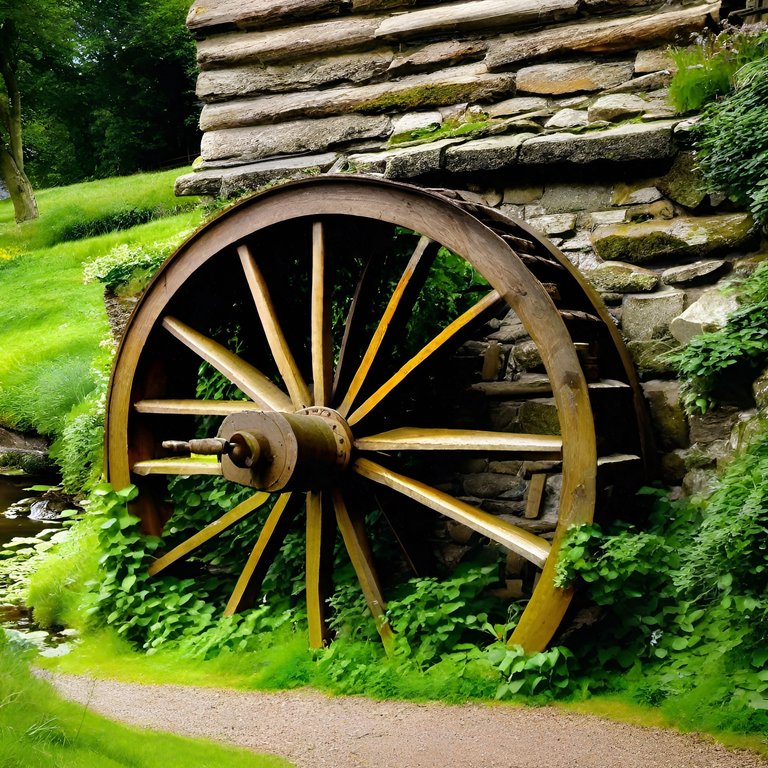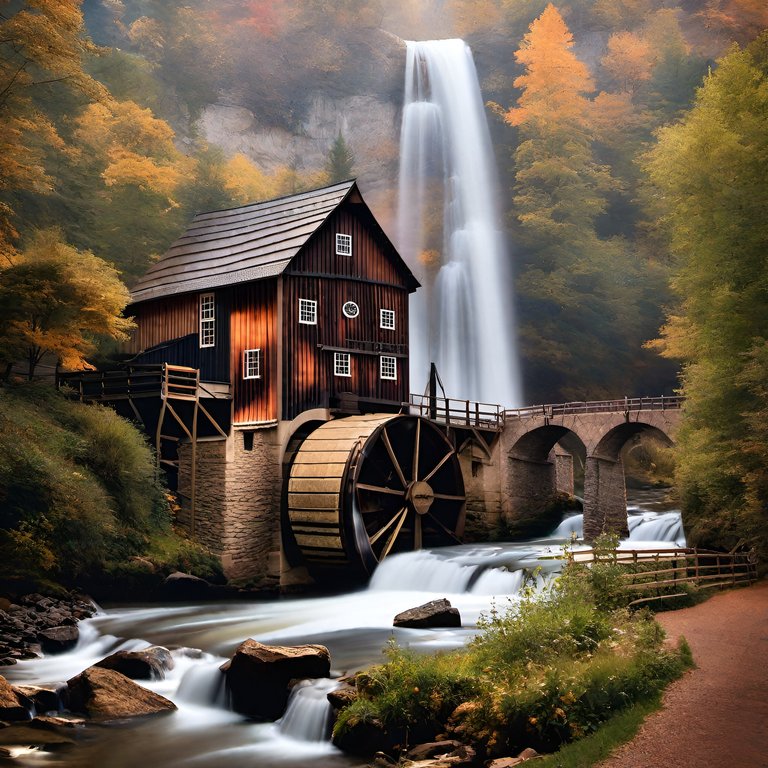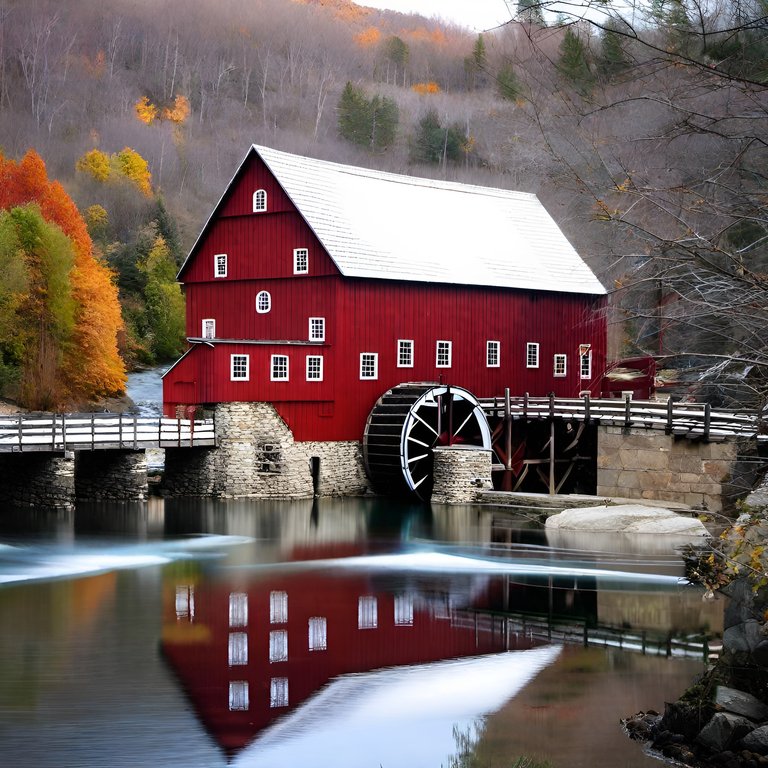Mills for the Production of Pigments
Hey dear Hive community, first of all I would like to welcome you all to my new post and hope you had a day that brought some positive experiences into your life! Today I would like to discuss an interesting topic and hope you are able to expand your knowledge a little.
Here are some artworks of mills that I created with the help of artificial intelligence and specifically I would like to discuss the connection to the production of color pigments, where mills play an important role in history. Every painter knows that the right pigments matter and in history there are many different types of mills that have focused on crushing different materials to produce colors and in the past this process was very difficult and the work was greatly simplified. Even then, materials were laboriously crushed between stones or with a mortar mill, but this was only interesting for the production of small quantities and when it came to producing more pigments, this work proved to be extremely hard. An important milestone was the stone mill with which it was easy to crush large quantities of minerals, which were useful for the production of colors and then these crushed minerals were sifted several times and mixed with substances such as resin, water or others and soil was often crushed with the help of mills to produce earth colors. Often many grain mills have also been rebuilt especially for these purposes and an important step takes place in the 17th century where small color mills or so-called pigment mills were developed which could be operated with the help of a crank and thus it was possible for the artists to produce their own paints without great effort and various minerals were also used as raw material.
It can be said that these small color mills wer also inspired by the stone mills and the topic quickly became more and more popular and more painters began to use this technique and until the production of industrially produced synthetic pigments it was of great relevance. This principle was also applied to larger buildings and various models were built that had a similar structure but were able to crush larger quantities and in addition to the typical crank, various other methods were also developed that simplify the work and often water or wind power was also used for the purposes. Another big step at that time was also the invention of the so-called Woad mills which focused specifically on the crushing of plants which were popular for the production of paints and especially the plant woad which was also known under the scientific name Isatis tinctoria was very appreciated because of the blue color that can be extracted from it. The mills were already very common in Europe in the Middle Ages and woad mills were mainly operated with the help of animals to facilitate the work and often other plants were processed with the same principle, which were of great importance for the production of paints. The leaves were mainly used for these purposes and to this day, traces of mills that were used for these purposes can be found again and again in museums or in other places and the topic is of great relevance in art history.
Thanks a lot for taking the time to read through my post and I hope you like it and can learn something new about history!




Colors in life is much important and we can't imagine life without color's. Very beautiful shots.
You said that well! Glad you like my creations dear @qwr
https://twitter.com/lee19389/status/1745418721777377334
#hive #posh
Wow you made such a pretty landscapes wonderful 👍. Taste of colors is also good keep doing
Thanks a lot 🙂
The combination of colours make the image look beautiful
Thanks for the feedback
The combination of the uses of mill is highly effective
Great that you are also interested in this topic! It is important that this culture and the diversity behind it continue to be promoted.
It was really an interesting topic I must confess
https://twitter.com/adenijiadeshin7/status/1745931062146994659?s=19
https://twitter.com/jewellery_all/status/1746357197309948408